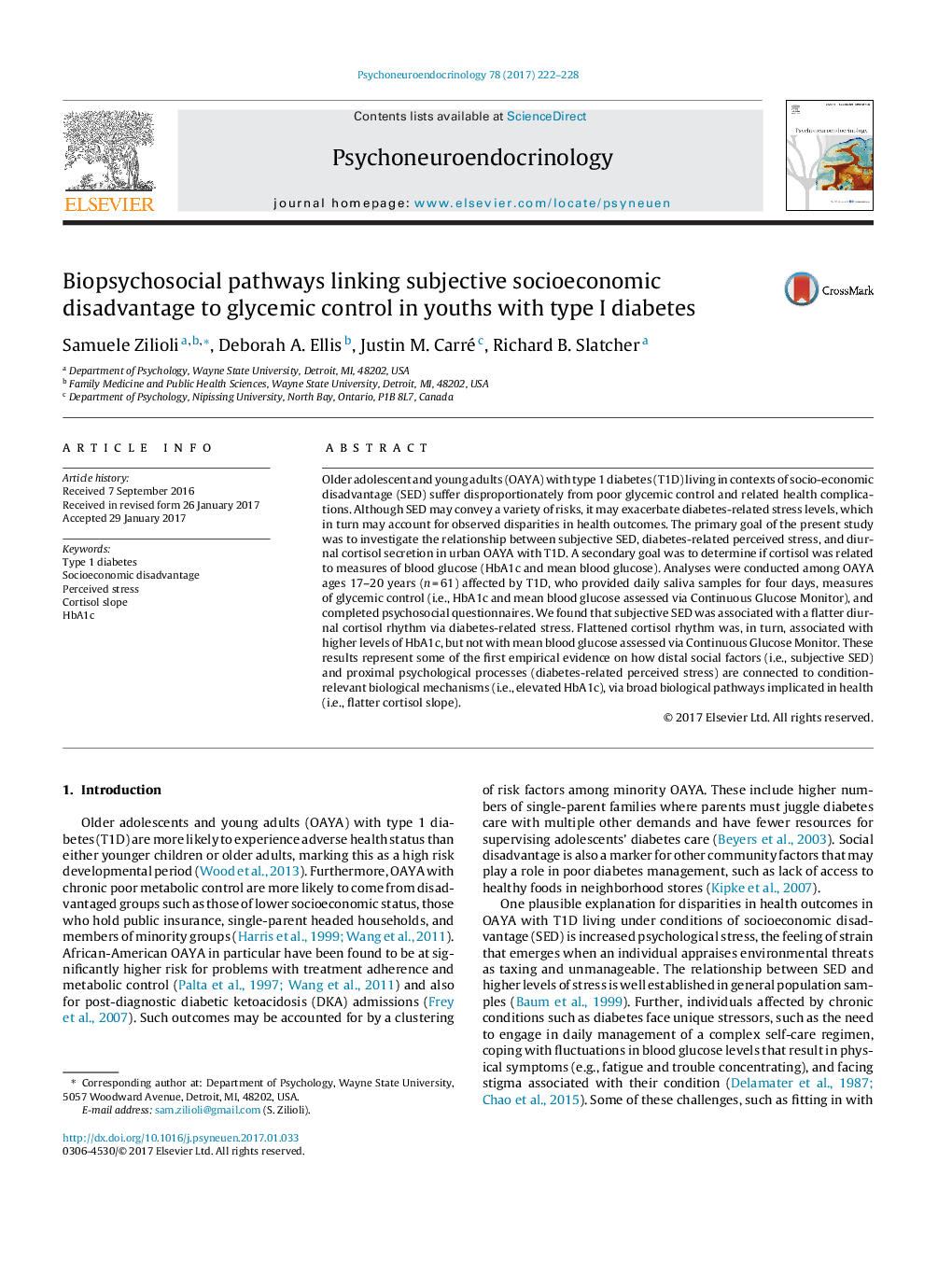| Article ID | Journal | Published Year | Pages | File Type |
|---|---|---|---|---|
| 4934500 | Psychoneuroendocrinology | 2017 | 7 Pages |
Abstract
Older adolescent and young adults (OAYA) with type 1 diabetes (T1D) living in contexts of socio-economic disadvantage (SED) suffer disproportionately from poor glycemic control and related health complications. Although SED may convey a variety of risks, it may exacerbate diabetes-related stress levels, which in turn may account for observed disparities in health outcomes. The primary goal of the present study was to investigate the relationship between subjective SED, diabetes-related perceived stress, and diurnal cortisol secretion in urban OAYA with T1D. A secondary goal was to determine if cortisol was related to measures of blood glucose (HbA1c and mean blood glucose). Analyses were conducted among OAYA ages 17-20 years (n = 61) affected by T1D, who provided daily saliva samples for four days, measures of glycemic control (i.e., HbA1c and mean blood glucose assessed via Continuous Glucose Monitor), and completed psychosocial questionnaires. We found that subjective SED was associated with a flatter diurnal cortisol rhythm via diabetes-related stress. Flattened cortisol rhythm was, in turn, associated with higher levels of HbA1c, but not with mean blood glucose assessed via Continuous Glucose Monitor. These results represent some of the first empirical evidence on how distal social factors (i.e., subjective SED) and proximal psychological processes (diabetes-related perceived stress) are connected to condition-relevant biological mechanisms (i.e., elevated HbA1c), via broad biological pathways implicated in health (i.e., flatter cortisol slope).
Related Topics
Life Sciences
Biochemistry, Genetics and Molecular Biology
Endocrinology
Authors
Samuele Zilioli, Deborah A. Ellis, Justin M. Carré, Richard B. Slatcher,
